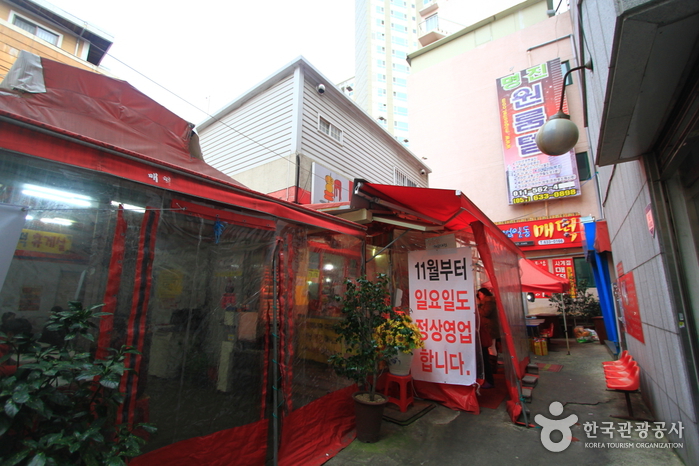Olive Young - Busan Munhyeon Branch [Tax Refund Shop] (올리브영 부산문현점)
8.0Km 2024-06-27
1F, 31, Suyeong-ro, Nam-gu, Busan
-
Eulsukdo Migratory Bird Park (을숙도 철새공원)
8.1Km 2021-04-23
1240, Nakdongnam-ro, Saha-gu, Busan
+82-51-209-2031
Eulsukdo Migratory Bird Park, designated as Natural Monument No. 179, is located in the lower part of Elsukdo Island. Renovated in 2009, the park is the central area for migratory bird habitats and ecology tourism. In winter, migratory birds can be seen at the wetlands. Nakdong Estuary Eco Center in the park provides information on various eco-life of the area as well as treat injured wild animals.
Olive Young - Kyungnam College of Information & Technology Branch [Tax Refund Shop] (올리브영 경남정보대점)
8.1Km 2024-06-27
116, Naengjeong-ro, Sasang-gu, Busan
-
Busan Jungang Market (부산 중앙시장)
8.1Km 2024-02-26
34-3 Jungangbeonyeong-ro 20beon-gil, Busanjin-gu, Busan
Busan Jungang Market, a prominent traditional market in Busan, is noted for its extensive range of flowers, potted plants, and artificial flowers. Beyond its floral offerings, the market also features a diverse array of food options, including tteokbokki, sundae, dakgangjeong (deep-fried and braised chicken), and other deep-fried dishes. Additionally, it offers a variety of attractions and activities. Spanning from the first basement to the third floor, visitors can find restaurants, jewelry stores, and other general shops, along with a wholesale market for flowers and plants.
Wonjo Beomil-dong Maetteok (원조범일동매떡)
8.2Km 2024-03-15
52-2 Gold thema-gil, Busanjin-gu, Busan
+82-51-633-0166
Wonjo Beomil-dong Maetteok is a renowned snack restaurant in Busan, famous for its spicy tteokbokki. It first opened its doors in 1966 in Beomil-dong, Busan. Maetteok, short for "maeun tteokbokki," refers to tteokbokki seasoned with spicy sauce made from chili pepper powder, red chili paste, sugar, garlic, and ginger. The rice cakes are chewy, and the sauce is spicy yet flavorful. They also offer various side dishes such as fishcakes, deep-fried dishes, sundae, gimbap, and instant noodles.
E-Mart - Munhyeon Branch [Tax Refund Shop] (이마트 문현)
8.3Km 2024-04-22
47, Jeonpo-daero 91beon-gil, Nam-gu, Busan
-
Busan Cultural Center (부산문화회관)
8.4Km 2021-08-06
1, UN pyeonghwa-ro 76beon-gil, Nam-gu, Busan
+82-51-607-6000
Busan Cultural Center began construction in October 1983 and finished constructing three halls in 1993. In April 2010, the cultural center underwent renovations and reopend in October. The architecture format used traditional Korean houses with a large, medium, and small halls. Large gates and walls were removed to allow easy access. The roof used concrete slabs to recreate traditional patterns and the exterior walls are made of granite stone.
![Ruche Jewelry [Tax Refund Shop] (루체쥬얼리)](http://tong.visitkorea.or.kr/cms/resource/50/2885450_image2_1.jpg)

![En Bijou [Tax Refund Shop] (엔비쥬)](http://tong.visitkorea.or.kr/cms/resource/52/2885452_image2_1.jpg)

 English
English
 한국어
한국어 日本語
日本語 中文(简体)
中文(简体) Deutsch
Deutsch Français
Français Español
Español Русский
Русский